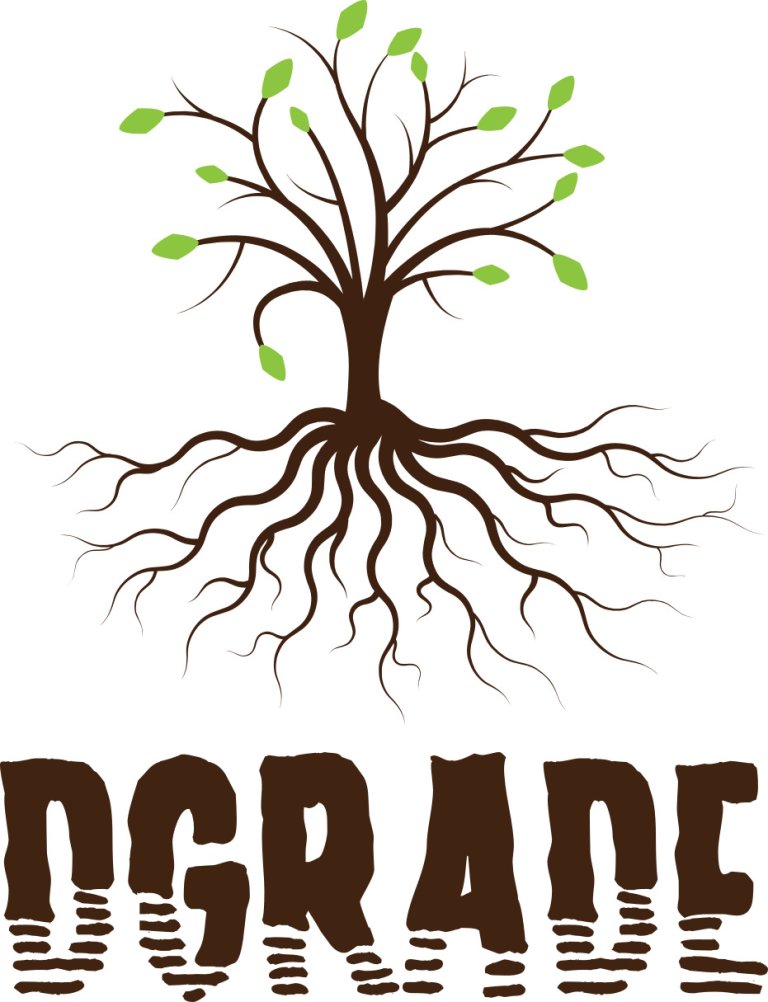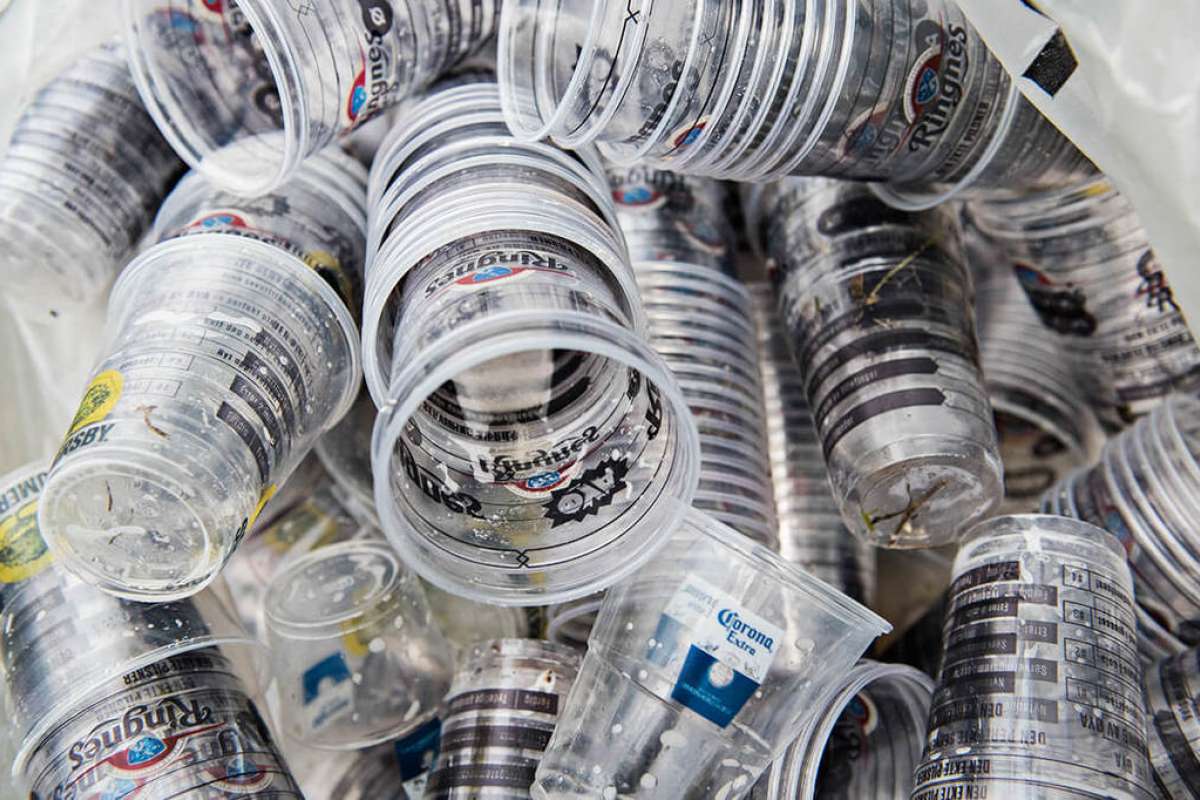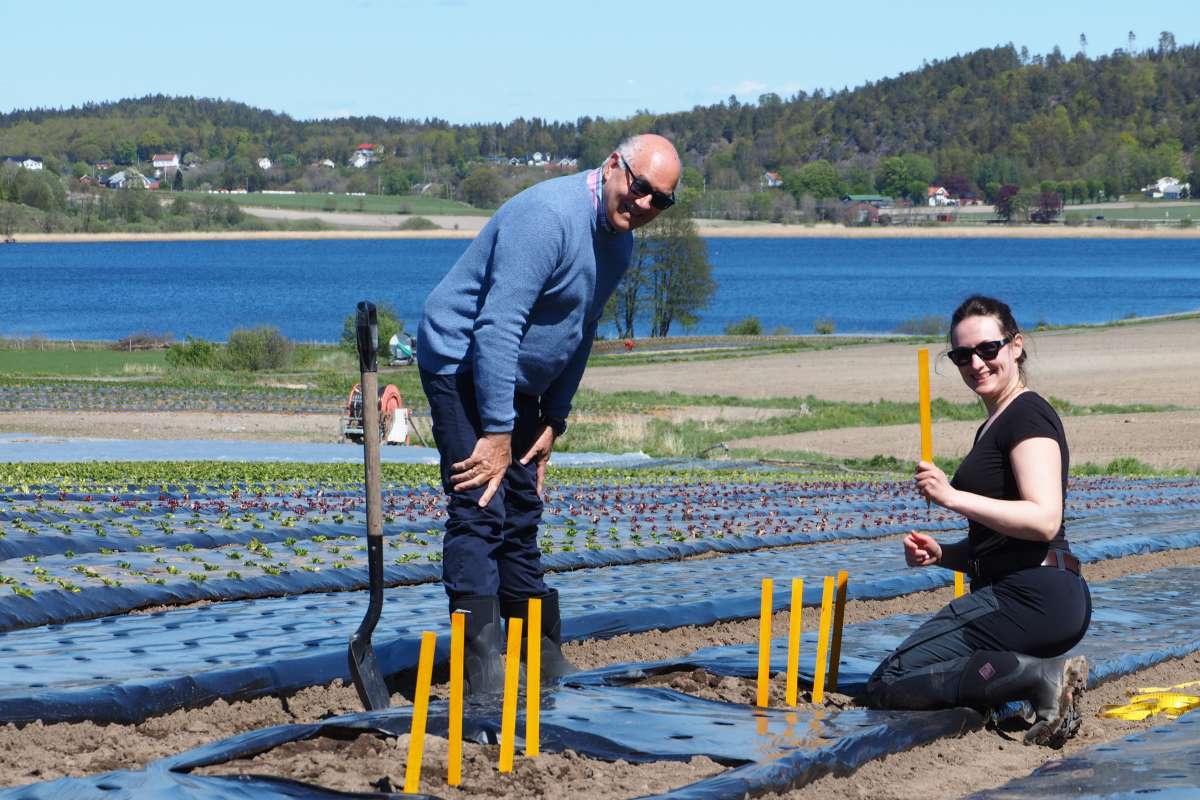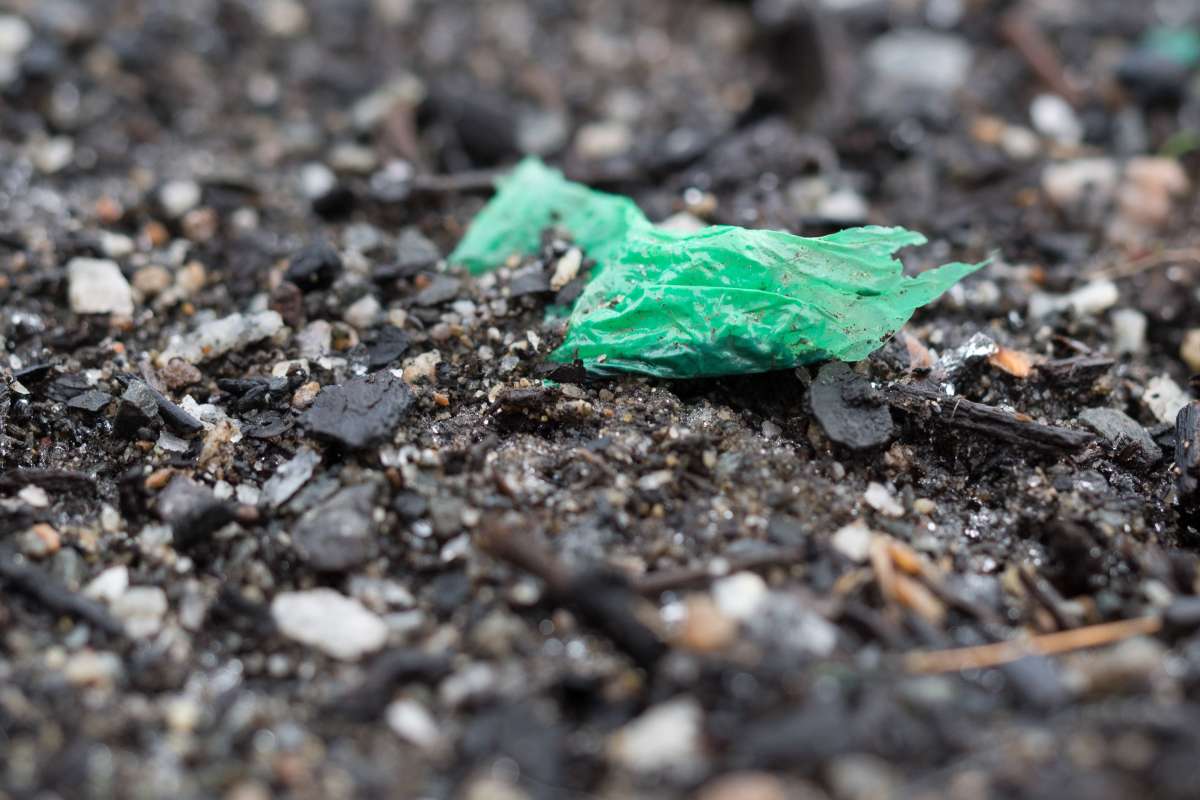Division of Environment and Natural Resources
DGRADE - Constraints to degradation of biodegradable plastics in terrestrial systems
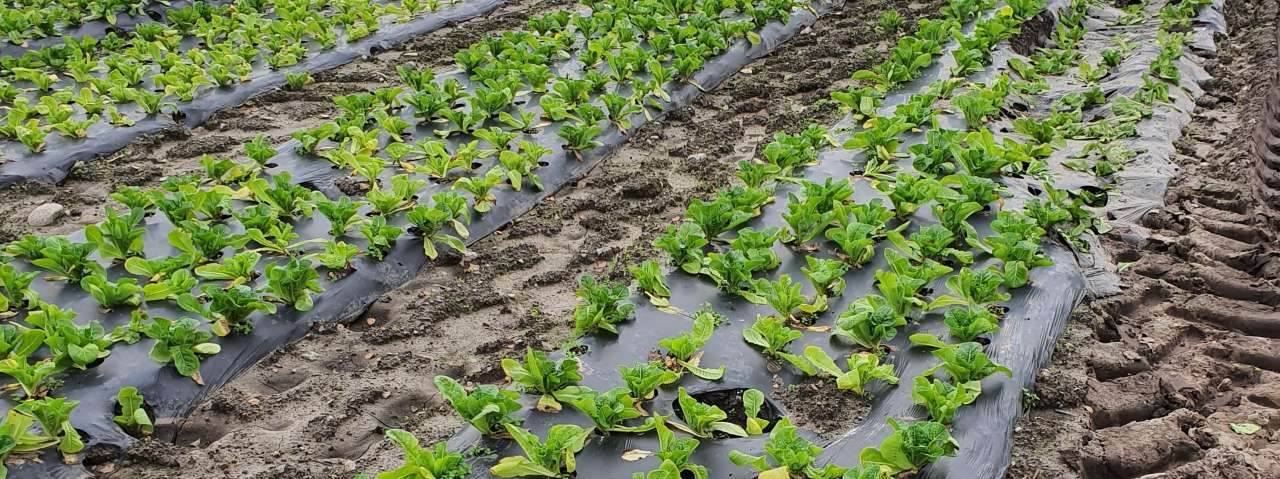
End: sep 2023
Start: jan 2020
There is an increasing interest in plastics, both as a resource and as a pollutant. Climate change and environmental concerns have boosted the development of biodegradable plastics, spanning from disposable food containers to waste bags and agricultural mulch films. But how fast do these products degrade in Nordic soils and waste streams?
| Status | Active |
| Start - end date | 01.01.2020 - 30.09.2023 |
| Project manager | Claire Coutris |
| Division | Division of Environment and Natural Resources |
| Department | Bioresources and Recycling Technologies |
| Partners | NIBIO, NORSUS, Green Dot Norway, SIMAS IKS, Norsk Landbruksrådgiving, Agri Råd. |
| Total budget | 6480000 |
| Funding source | Norwegian Research Council and Handelens Miljøfond (Grant number 303560) |
There is an increasing interest in plastics, both as a resource and as a pollutant. Although a lot of emphasis is placed on recycling, the use of recycled plastics is still low in Europe. In this context, climate change and environmental concerns have boosted the development of various types of biodegradable plastics.
The use of biodegradable plastics spans from disposable containers for food/drink, serviceware and wipes, via waste bags for food waste collected for biogas production, to agricultural films used to cover soil during vegetable production. Waste and recycling companies are poorly prepared for such a transition, as is the public, which struggles in keeping a profusion of products and their waste separation apart. In addition, biodegradable plastics may not degrade so quickly and completely that the products disappear in nature, and the label may encourage people think otherwise, enhancing littering.

Non-degradable bio-based polymers (such as bio-PET, bio-PE, etc.) are outside the scope of this project. The ambiguous term "bioplastics" should be avoided, as the prefix "bio" doesn't indicate whether it stands for biodegradable or bio-based.
Our three main objectives
- Firstly, we wanted to know how fast biodegradable mulch films used in agriculture are degraded in cold climatic regions like Norway. There is public concern that degradation may not occur fast enough, and that macro- and microplastics could accumulate in soils.
- Secondly, we wanted to describe the fate of biodegradable plastics, such as compostable waste bags, glasses and cutlery, during composting and biogas production. It is important to verify that the intended end-of-life treatments are not a source of plastics to the environment.
- Finally, we wanted to describe the environmental costs/benefits of biodegradable plastics and provide a life-cycle perspective in both agriculture and waste streams.
Ultimately, the project helped providing the recycling and composting sector with the information needed to make sound decisions on questions regarding these materials, and provide farmers with advice on which type of biodegradable plastic products to use for specific purposes and conditions.
Work packages

Results achieved
- Degradation in soil (WP2)
Before this project, the fate of biodegradable plastic mulch in soil was unknown under Nordic conditions. It has now been established that degradation occurs, albeit at a slower pace, with worse-case scenarios for complete degradation in Norwegian soils lying between 2.5 and 9 years, depending on climatic conditions, soil properties and agricultural practices. Beside higher soil temperature, higher soil organic matter content has been shown to accelerate degradation.
Scientific article "In situ degradation of biodegradable plastic mulch in Nordic agricultural soils"
- Degradation in waste streams (WP3)
The project has demonstrated through a full-scale experiment conducted at an industrial composting plant that compostable plastic products, such as polylactic acid (PLA) glasses, are successfully degraded within the time frame of the composting process. Metagenomics analysis during the whole composting process also demonstrated that the main actors of degradation are fungi, naturally present in compost.
For biodegradable plastics entering biogas production, on the other end, we demonstrated that the biodegradable plastic bags used in Norway for food waste collection were only marginally degraded during biogas process, even after thermal hydrolysis pretreatment and high temperature conditions. So, unless biogas digestate is further treated to remove biodegradable plastic residues, the application of digestate will lead to accumulation of plastics in agricultural soils.
NIBIO report on degradation during biogas production
- Life cycle analysis (WP4)
We showed that biodegradable mulch was not necessarily the most environmentally friendly alternative compared to e.g. conventional polyethylene mulch, and uncovered important knowledge gaps related to biodegradable plastic production. LCA also showed that food waste collection in paper bags results in a lower climatic impact compared to food waste collection in biodegradable and conventional plastic bags and is the only option removing the risk for plastic pollution.
A short summary of the results (in Norwegian)
Forum Landbruksplast made a short video (3 min, in Norwegian) summarizing the project's results.
For special interested (and Norwegian speakers), we have also recorded the final seminar, where all topics and results are presented and discussed. This (over 4 hour-long) video is available upon request.
Publications in the project
Abstract
No abstract has been registered
Abstract
Since the 1950s, the use of plastics in agriculture has helped solving many challenges related to food production, while its persistence and mismanagement has led to the plastic pollution we face today. A variety of biodegradable plastic products have thus been marketed, with the aim to solve plastic pollution through complete degradation after use. But the environmental conditions for rapid and complete degradation are not necessarily fulfilled, and the possibility that biodegradable plastics may also contribute to plastic pollution must be evaluated. A two-year field experiment with biodegradable mulches (BDMs) based on polybutylene adipate terephthalate (PBAT/starch and PBAT/polylactic acid) buried in several agricultural soils in mesh bags showed that also under colder climatic conditions does degradation occur, involving fragmentation after two months and depolymerization by hydrolysis, as shown by Fourier-transform infrared spectroscopy. The phytopathogenic fungus Rhizoctonia solani was found to be associated with BDM degradation, and the formation of biodegradable microplastics was observed throughout the experimental period. Between 52 and 93 % of the original BDM mass was recovered after two years, suggesting that accumulation is likely to happen in cold climatic regions when BDM is repeatedly used every year. Mass loss followed negative quadratic functions, implying increasing mass loss rates over time. Despite the range of climatic and edaphic factors, with various agricultural practices and vegetable productions at the study locations, the parameters that significantly favored in situ BDM degradation were higher soil organic matter content and temperatures.
Abstract
De siste årene har det kommet en rekke bionedbrytbare plastvarianter, også i Norge. Men hvor nedbrytbar er egentlig denne plasten under norske forhold med relativt lave temperaturer? Brytes den fullstendig ned, eller omdannes den til makro- eller mikroplast i stedet? Gjennom prosjektet DGRADE – Nedbrytning av bionedbrytbar plast i jord og avfallsstrømmer har forskere forsøkt å finne svar på disse spørsmålene. De kan nå slå fast at plasten brytes ned, men kun hvis forholdene ligger til rette for det. Hvis ikke forholdene er gode nok, kan også nedbrytbare plastprodukter bidra til plastforsøpling
Authors
Claire CoutrisAbstract
No abstract has been registered
Abstract
Ny forskning viser at nedbrytbar plast brytes ned under norske forhold, men kun dersom den havner der den skal. Det vil si i industriell kompost eller i et jordmiljø der forholdene ligger til rette for at mikroorganismene kan bryte den ned.
Abstract
No abstract has been registered
Authors
Claire CoutrisAbstract
No abstract has been registered
Abstract
No abstract has been registered
Abstract
No abstract has been registered
Authors
Claire CoutrisAbstract
No abstract has been registered
Authors
Claire CoutrisAbstract
No abstract has been registered
Authors
Claire CoutrisAbstract
No abstract has been registered
Authors
Claire CoutrisAbstract
No abstract has been registered
Authors
Claire CoutrisAbstract
The presentation covers some of the work we are doing on two important sources of plastics and microplastics in Norwegian agricultural soils. The first is through soil amendment with biogas digestate. The second is through plastic mulching with biodegradable plastic film.
Authors
Claire CoutrisAbstract
No abstract has been registered
Authors
Claire CoutrisAbstract
Søkelyset på utfordringene med plast og forsøplingsproblematikken har sammen med nye krav og forbud fra EU, ført til at mange produsenter ønsker seg gode alternativer til fossil plast. Et resultat av dette er at stadig flere velger bionedbrytbar plast i emballasje eller som alternativ i landbruket. Men hva skjer med den bionedbrytbare plasten? Enten ute på jordet eller i kommunale biokomposteringsanlegg. Blir den brutt ned? Det er noe Grønt Punkt Norge ønsker bedre svar på. Derfor har vi vært initiativtaker til et 3-årig prosjekt hvor NIBIO skal forske på dette. Prosjektet er nå halvveis og onsdag 24. mars vil forsker Claire Coutris fra NIBIO dele noen foreløpige resultater.
Authors
Claire CoutrisAbstract
No abstract has been registered
Abstract
There is an increasing interest in plastics, both as a resource and as a pollutant. In Europe, 25.8 million tons of plastic waste are generated each year, and their effects on climate, economy, human and environmental health are major challenges that society needs to address. Although a lot of emphasis is placed on recycling, the use of recycled plastics is still low in the EU. In this context, climate change and environmental concerns have boosted the development of various types of biodegradable plastics. The use of biodegradable plastics spans from disposable containers for food/drink, serviceware and wipes, via waste bags for organic waste collected for biogas production, to agricultural films used to cover soil during vegetable production. However, biodegradable plastics are rarely degraded so quickly and completely that the products disappear in nature, and the label may encourage people think otherwise, enhancing littering. The aim of our study was to describe the fate of biodegradable materials and products during waste treatment, and more specifically during composting. How long does it take these materials to degrade? What are the conditions for degradation, and ultimately, for obtaining plastic-free compost products? To answer these questions, we selected relevant materials, including compostable serviceware, biodegradable plastic bags used for organic waste collection, and biodegradable agricultural mulch films. Composting experiments were performed both at lab-scale (1.5 L containers with externally applied heating) and larger scale (in 140 L insulated compost tumblers, with natural heating from the composting processes, continuously monitored). The endpoints studied were recovery, mass loss, changes in morphology and composition, and microbial analysis of the various composts. In addition, we assessed the applicability of chemical digestion methods used for sample pretreatment of environmental samples containing conventional plastics to biodegradable plastics. Biodegradable plastics is an umbrella term covering materials with diverse polymeric compositions and thus material properties. This was well demonstrated by our selected materials, which displayed distinct degradation behaviors under similar controlled conditions. The time-course of degradation during composting will be presented for all selected materials, together with the main parameters influencing their degradation rates. In addition, some methodological challenges in this research field will be discussed. Finally, experience from a municipal composting facility receiving biodegradable plastic waste will also be presented to put our laboratory-based results into perspective.
Abstract
Stadig flere bønder bytter ut tradisjonell landbruksplast med bionedbrytbar plastfilm som kan freses rett ned i jorda etter bruk. Nå er forskere i gang med å undersøke hvor nedbrytbar den faktisk er under norske forhold.
Abstract
Stadig flere bønder bytter ut tradisjonell landbruksplast med bionedbrytbar plastfilm som kan freses rett ned i jorda etter bruk. Nå er forskere i gang med å undersøke hvor nedbrytbar den faktisk er under norske forhold.
Abstract
No abstract has been registered
Abstract
No abstract has been registered
Authors
Claire CoutrisAbstract
No abstract has been registered
Abstract
Organic industrial and household waste is increasingly used in biogas plants to produce bioenergy, generating at the same time extensive amounts of organic residues, called biogas digestates. While agricultural soils can benefit from the organic matter and nutrients, in particular nitrogen and phosphorus, contained in biogas digestates, we need to assess the environmental and health risks associated to the undesirable substances that may come along. Among those, only a few are covered by actual regulations. For instance, the quantity of plastic materials below 4 mm in biogas digestate is currently not limited to any threshold, despite its likely occurrence in organic waste (waste bag remains and wrong waste sorting) and persistence in the environment. The aim of our study was identify and quantify plastic materials in digestates from Norwegian biogas plants, that are using various types of organic waste sources (e.g. sewage sludge, food waste, animal manure). In addition, a lab-scale experiment was set up to assess the physical and chemical transformations undergone during biogas processes by plastic materials commonly found in digestates. The methods used in our study included simultaneous thermal analysis coupled to Fourier transform-Infrared spectroscopy (for analysis of polymer composition), scanning electron microscopy (for assessment of physical transformations), and a range of physical and chemical extractions for recovering plastic materials from biogas digestates. While all digestates complied with current regulations, plastic particles with a size of 0.2-3 mm made up to 1% (on dry mass basis) of the samples analyzed. Analysis of the polymeric composition of the recovered plastic fragments confirmed that they originated both from the waste bags themselves (shredded during the first steps of waste handling) and from wrong waste sorting. In addition, the lab-scale biogas treatment was shown to considerably change the structure of the studied plastic materials, illustrating a pathway for the formation of secondary microplastics. Some analytical challenges linked to the size and aging of the plastic materials, as well as the complex composition of the digestates, will be discussed. From a broader perspective, a few options will be presented to address the presence of plastic materials in biogas digestates, and thereby minimize the risk associated to their use as soil amendment.
Authors
Erik J. JonerAbstract
No abstract has been registered
Abstract
Vi har alle hørt om problemene plast i havet kan føre med seg. Men plast havner også i jord, blant annet via avløpsslam, biogjødsel og fra plastbruk i landbruket. Akkurat hvor mye plast det er snakk om er imidlertid uvisst.
Abstract
Vi har alle hørt om problemene plast i havet kan føre med seg. Men plast havner også i jord, blant annet via avløpsslam, biogjødsel og fra plastbruk i landbruket. Akkurat hvor mye plast det er snakk om, er imidlertid uvisst.
Abstract
Vi har alle hørt om problemene plast i havet kan føre med seg. Men plast havner også i jord, blant annet via avløpsslam, biogjødsel og fra plastbruk i landbruket. Akkurat hvor mye plast det er snakk om, er imidlertid uvisst.
Conference lecture – Plast og mikroplast i jord: hvilke utfordringer står vi overfor?
Claire Coutris
Authors
Claire CoutrisAbstract
No abstract has been registered
Abstract
No abstract has been registered
Authors
Erik J. JonerAbstract
No abstract has been registered

